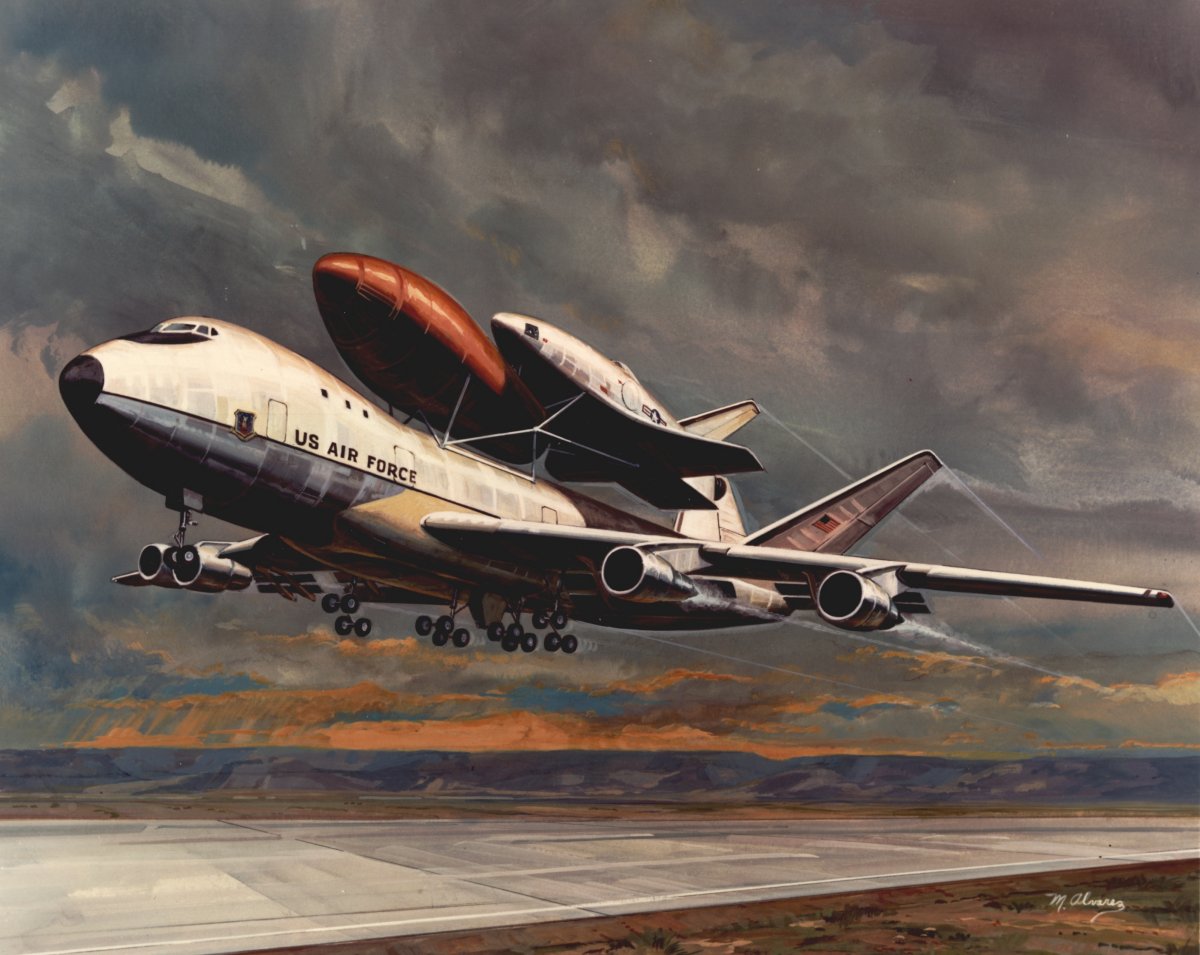Nov 052009
This bit of artwork illustrates the 1983 design by Rockwell International for the Air launch Sortie Vehicle program. This was meant to develop a small reusable spaceplane that could be launched on a moments notice, to service or place small satellites (communications, recon, etc.) or even weapons systems. Several companies hit upon the idea of using the 747 to carry a spaceplane equipped with a Shuttle-like expendable external fuel tank. Rockwell’s design was a manned vehicle equipped with a single SSME.
3 Responses to “Air Launch Sortie Vehicle artwork: 1”
Sorry, the comment form is closed at this time.

I’ve seen that “spaceplane” before :o)
There is a version showing it launching from a (4 I think?) turbofan powered, air cushion “sled” without the external tank.
As I recall the author of the book (something on “Aurora” IIRC) took the picture literally and commented that the plane would never work because it was shown “launching” from the sled shortly after take off.
My “take” though was the sled looked robust enough to be a substitute for a “full-up” 747 launch aircraft. Sans the majority of the 747 airframe the engines would be able to boost the ALSV to a higher (still subsonic though) speed and much higher altitude for launch.
(Enough to do without the ET? Doubtful unless they changed propellants and engines to a higher density mix than LOx/LH2.)
Who’s proposal used 10 RL-10s and the same set up, but had an SSME added to the tail of the 747?
Randy
> There is a version showing it launching from a (4 I think?) turbofan powered, air cushion “sled” without the external tank.
Similar aerodynamics, but a larger spaceplane.
> Who’s proposal used 10 RL-10s…
Boeing. They switched to seven RL-10’s in the tail of the 747, since a single SSME was overkill.
The air cushion ‘launcher’, IIRC was an answer to bombed runways for Fighters and F/B’s to use. Later in the program they were talking about linking the aircraft and sled so returing aircraft could land on the sleds before the runways could be repaird.
One of the things that killed it, IIRC, was some of the USAFR/G engineering companies would race the ‘regular’ engineering companies in getting pierced plate down. Regulars would use new and well cared for plates and reserves and guard would use old, beat up plates. Reserve and Guard use to beat the pants off the regulars with … umm … regular ease. 😉
Still, it did suffer from the giggle factor even though the numers worked.